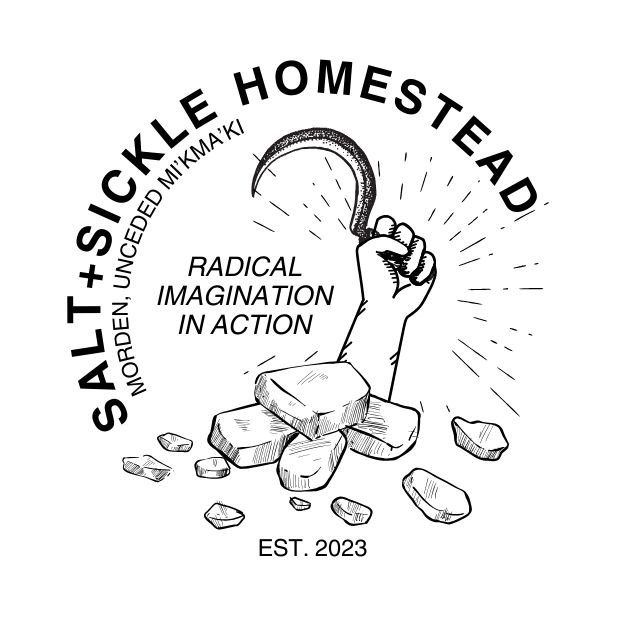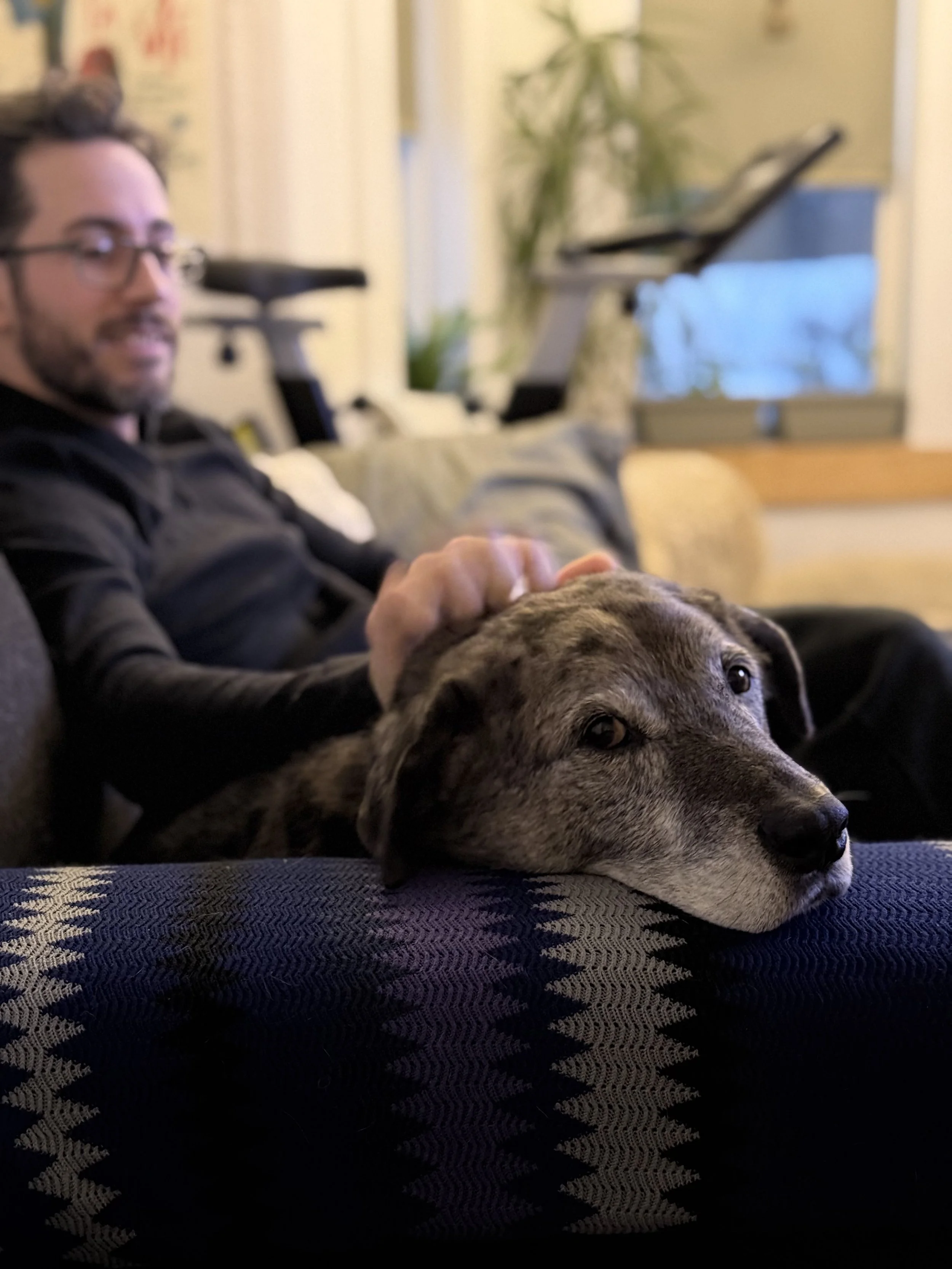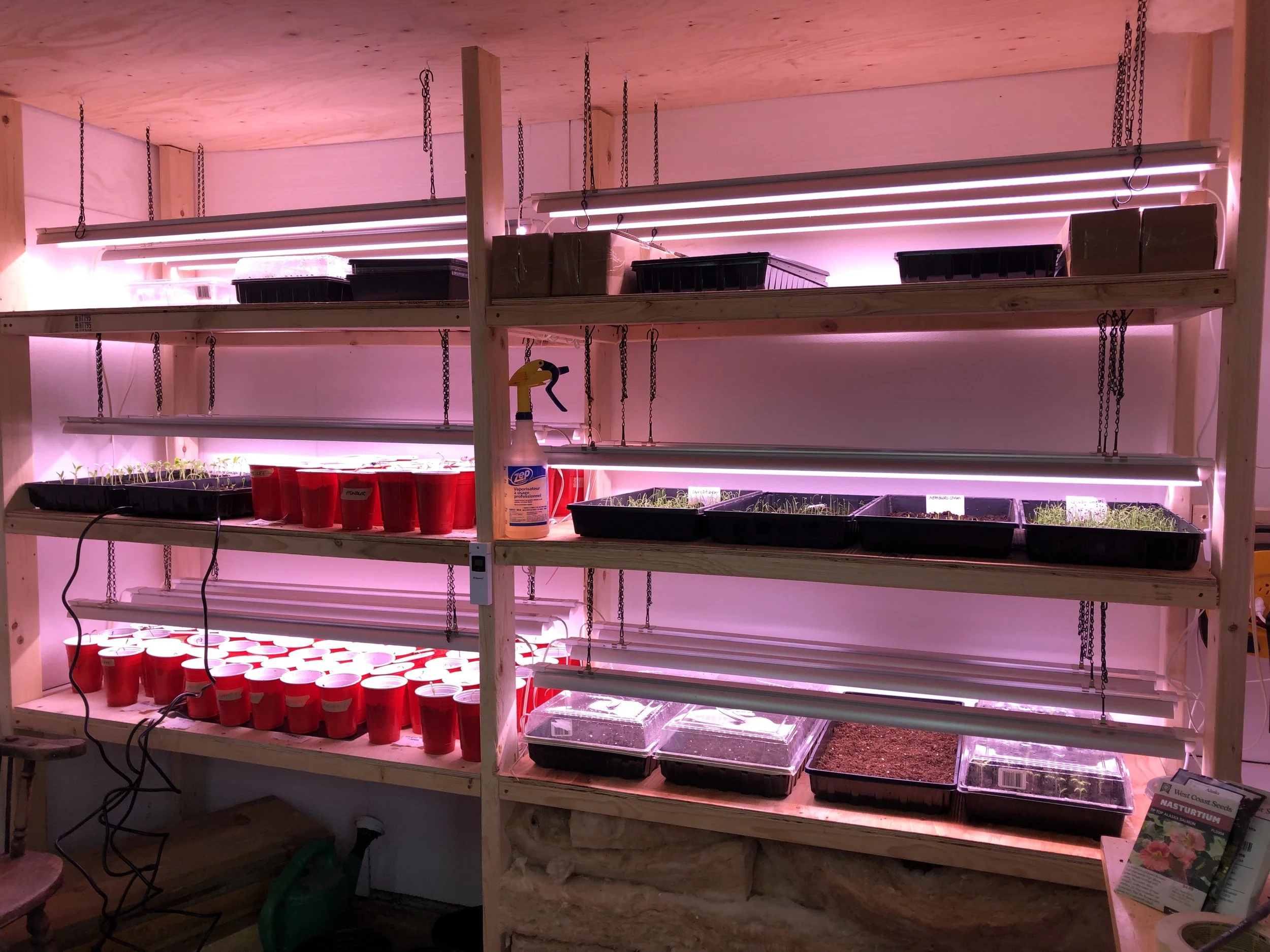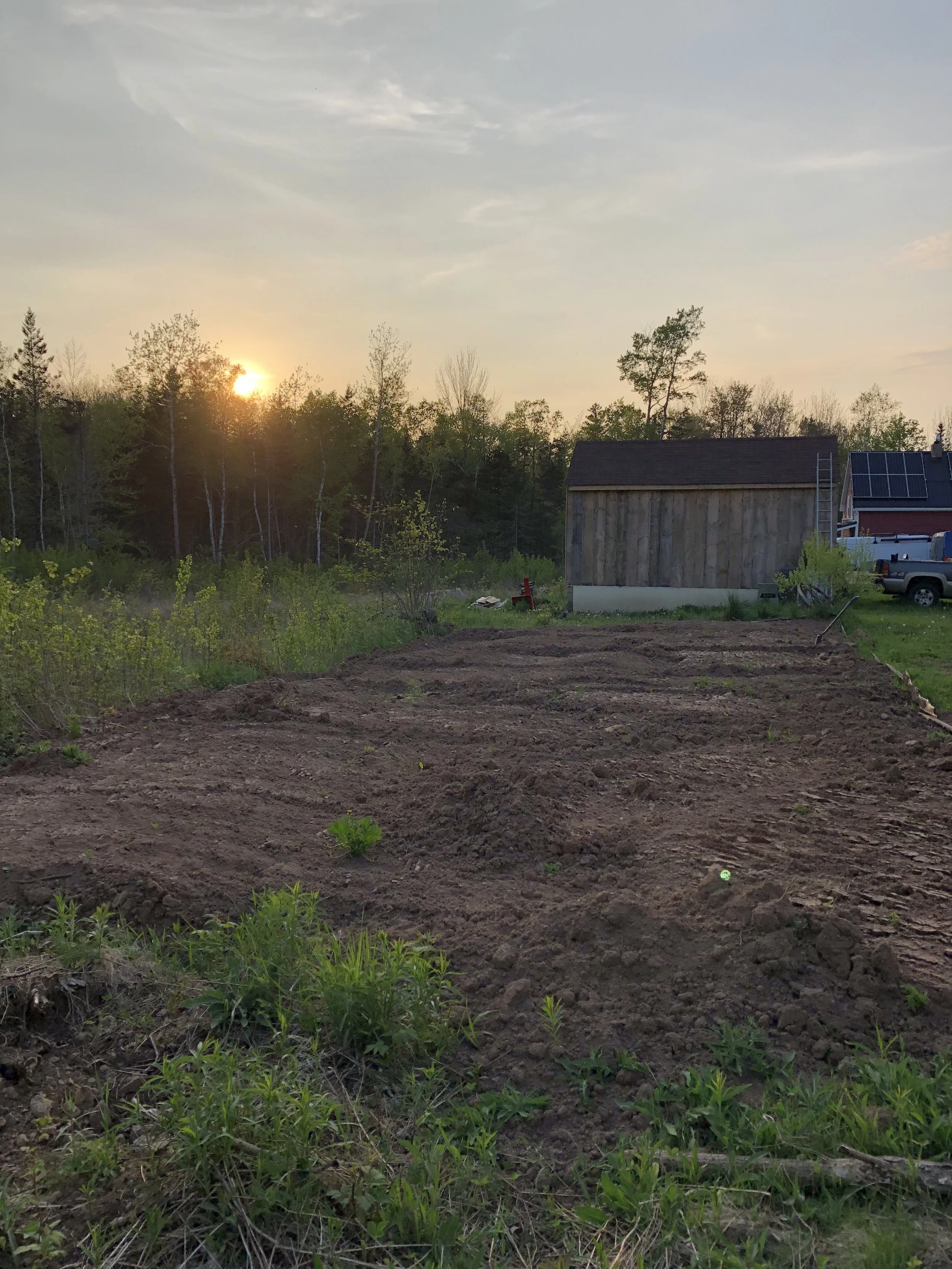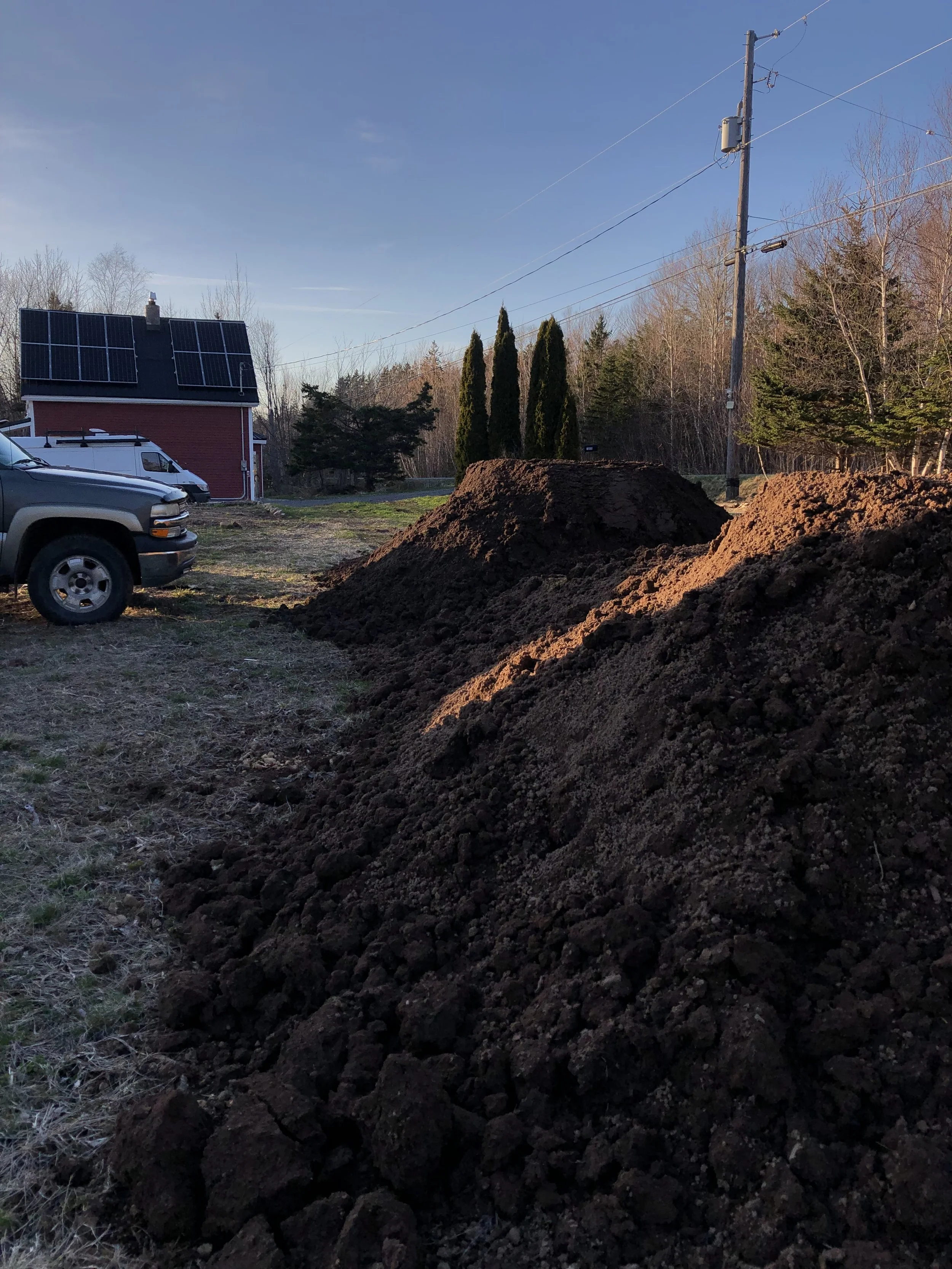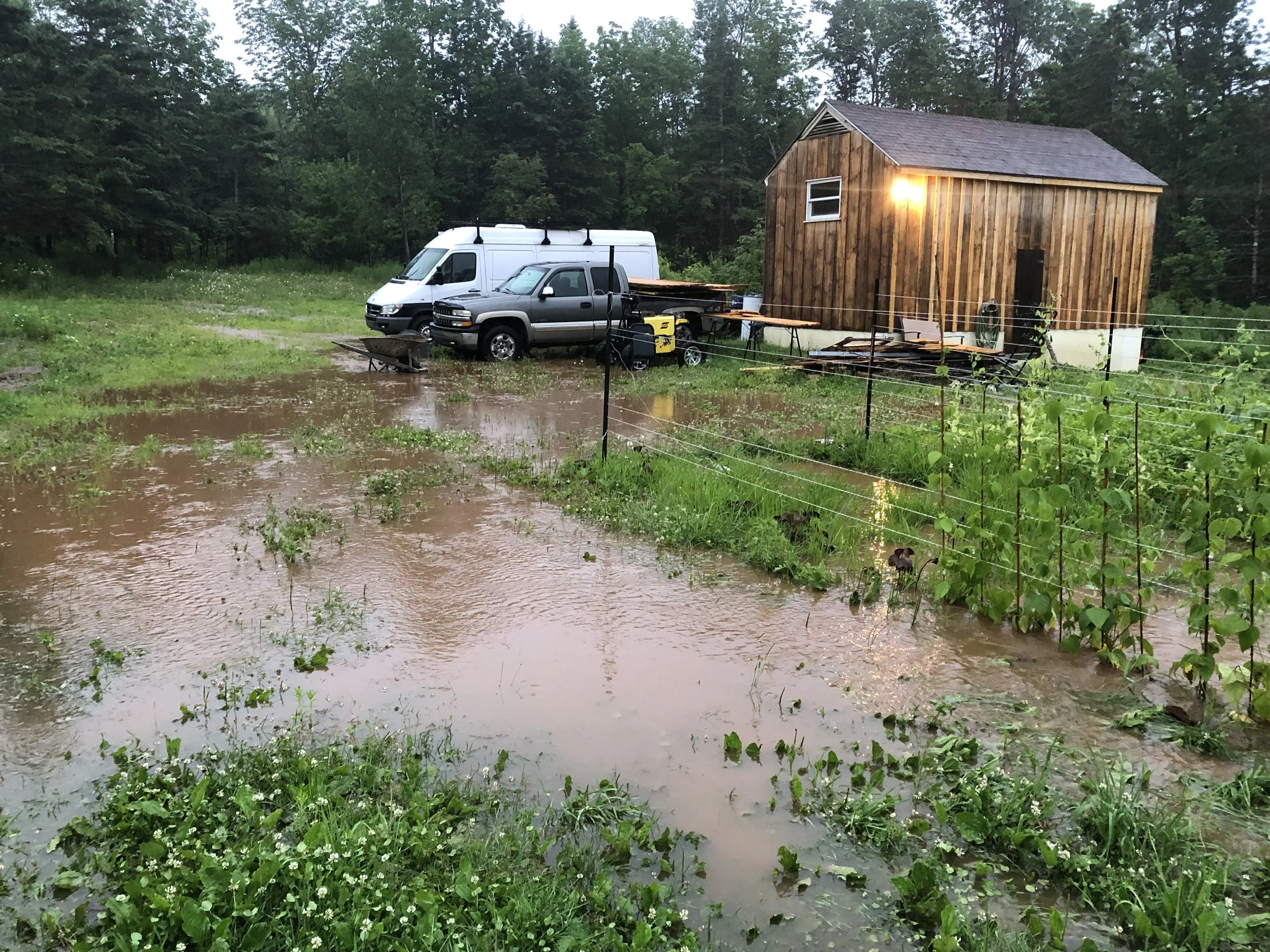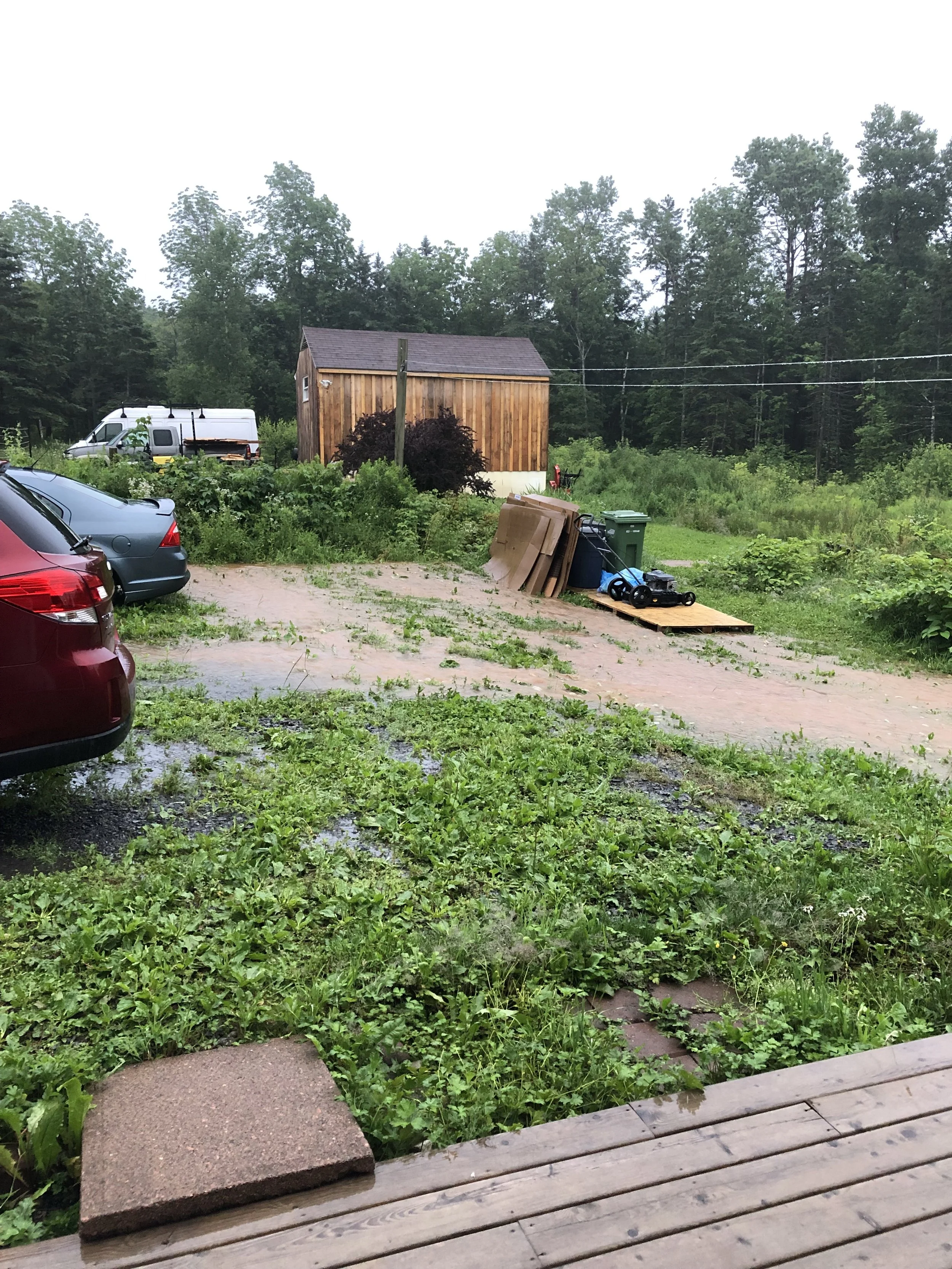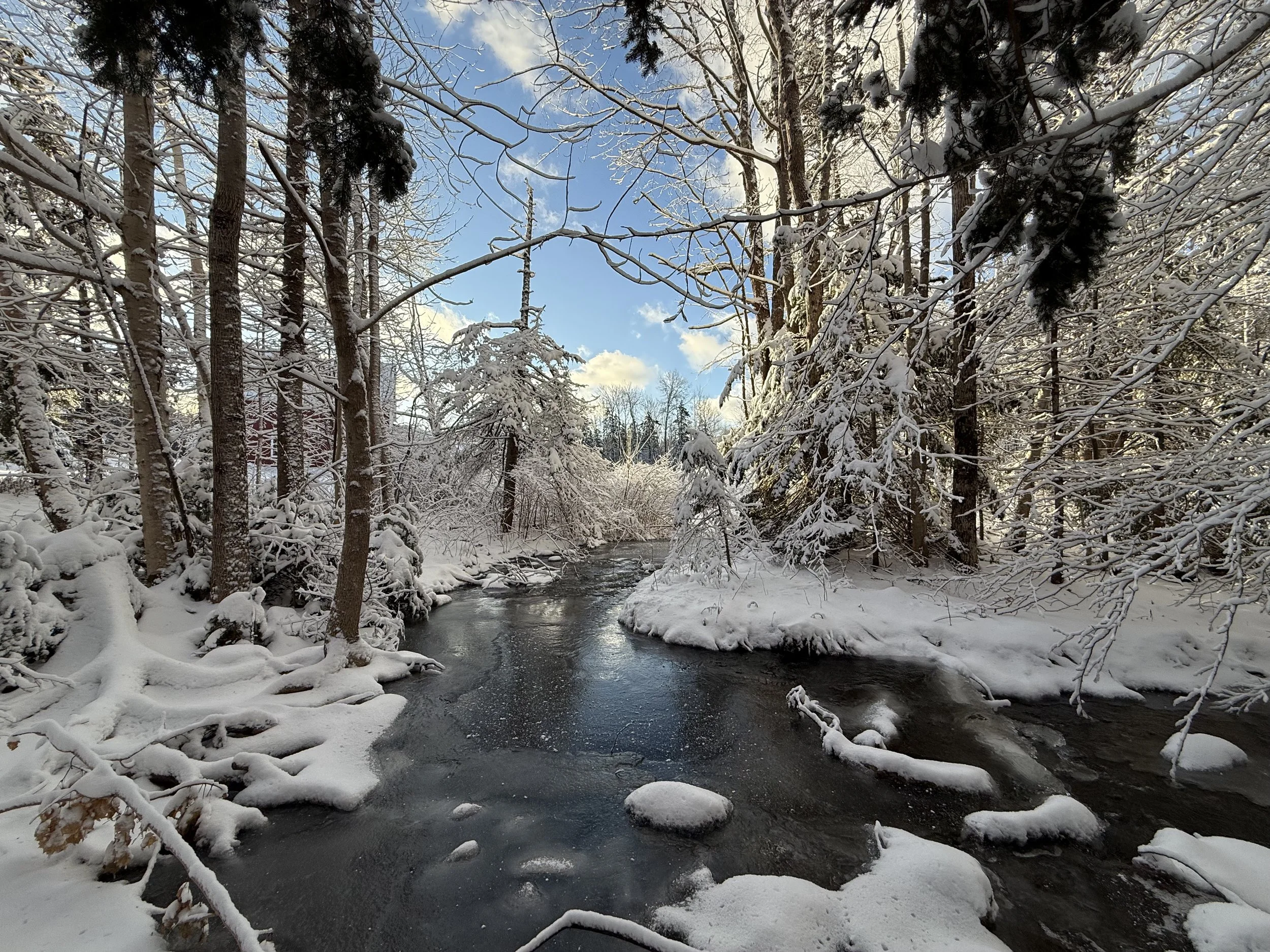Reflections + Intentions: Looking Back and Moving Forward.
Seed Space in the Barn
We began with our Barn space in January and February, creating a dedicated seed-starting area. This allowed us to double our starting capacity, with the proper space and work area to be able to store and organize seeds.
New garden bed
The Winter of 23/24 was very mild, with very little cold and snow. The soil remained parched and uneven; having lacked the necessity of a deep cold winter to prepare it for the year ahead. In the spring we had 40 yards of dirt delivered, and a very generous neighbour came to spread it with his tractor. This topped up existing gardens, in addition to creating a whole new bed behind the barn - more than doubling the growing space on the property.
An additional garden we call “the berry patch” was also created - a smaller bed with black and red currants, blueberry varieties, rhubarb and strawberry plants.
We created trellises by reappropriating old fencing with rebar stakes - perfect for beans and peas and tomatoes and cucumbers to crawl up.
We trimmed unruly trees, grasses, brush; weeded, plucked; hauled old rocks, logs; generally tended to the property to create the best possible season for ourselves.
It’s been a miserably cold and icy February here in Tewapskik, and all one can do is try to stay warm in front of the fire.
The wind rages. Snow drifts whip and twirl. The ground is a mixture of hardened ice and soft untouched snow.
But it’s alright. This is the time of year I get a lot of my resting in. I read books, craft. Plan the year ahead and set intentions for what I want to see. Oh, and I often reflect on the year passed, for any lessons needing carrying over to the year ahead.
2024, just like the year before it, was rife with learning. Full of trials and missteps - its message was loud and clear: I, mother nature, am in control. With that, I succumbed; I believed and took notes.
Now that I am here: organizing my seeds and planting schedule for the year ahead; planning events, workshops and the installation of on-site accommodations; I am attempting to embody the messages instilled in me through my first years of operation. Slowness, steadiness and intentionality; not taking on too much; and knowing when to push (and when to break) are all key components I intend to carry forward with me. 2024 was truly a year of losing the battle, no matter which way one tried to fight it; which in itself was a valuable reminder that sometimes things just don’t work out. All one can do is attempt again, carrying forward the knowledge learned.
After all, practice makes permanent.
40 Yards of Kopitek’s finest Top Soil
In the spring, under the dry and blazing hot sun, we transplanted our starts. The mornings were still chilly, but it warmed up instantly, and stayed very hot most of the day, for most of the summer. The balance between hot and cold was difficult for many of the transplants. Right out the gate, we lost a number of roots and starts due to the fluctuation of temperatures throughout the day.
The plants that survived the initial transplantation faced bouts of harsh sun and heat, followed by bouts of intense rain and flooding - basically scorching and drowning simultaneously. Days of nothing but sun, followed by days of constant rain provided great inspiration for weeds and grasses, that began to overtake the garden beds at an feverish rate. Despite our many attempts, transplants and bulbs became lost and choked out because we weren’t able to keep up with the pace of growth. Another lesson learned: it’s time to hire some support. Two folks, 7 acres, 3 massive garden beds (and so much more) can only be managed so well until those two folks are spread so thin that they can’t manage anymore. Working full-time jobs, commitments, responsibilities and even hobbies (or sleep, self care, that stuff) means there’s only so much time and space to take care of business. In terms of the business of Salt+Sickle Homestead, hiring property support is one thing I can delegate, to take off my plate - and something I intend to enact moving into 2025.
The Road out front our property, being washed away in the torrential downpour of July 11th 2024
Our property under water, right after the road crumbled, due to excessive flooding
In July, there was a serious and unprecedented amount of rain that fell in our area, which led to roads crumbling, bridges and beaches being washed away - in addition to our yard… and most of our gardens. The only garden that was spared was the new one installed behind the barn. Everything else became a rushing river, taking most of our new topsoil with it. Watching it all unfold was numbing - knowing that nothing except watching it unfold could be done.
The plants that weren’t swept away had their roots exposed; plants fickle about too much water began to rot. Our hefty potato crop died within days. Cucumbers, peppers, eggplants, peas, beans - all stunted or gone all together. Even being able to walk around our property became a struggle.
Goodbye topsoil
The brown earth that had been carried away in the flood left a trail through our yard. Everything was stained brown. The creek behind our house became a river, and while typically a trickle out to the Bay, was raging rapids taking over our waterway (and creating many more in the process).
It was a devastating blow for many in the area. The weeks that followed were filled with immense road repairs, cleanup, and trying to figure out how to move forward. There wasn’t a village in the area that didn’t experience a drastic event.
Upon surveying the damage on the Homestead, the will to fight against the weeds that somehow survived; the will to revive the beds and plants; the will to push through strong to the harvest season - it was all gone. Our area only has a small window of a growing season, and having half your crops fail that close to the end leaves no time to restart, repair or fight it through. While lucky enough to have a warm fall season, the damage was already done.
Like always, I look for the silver lining. As much as things bum me out, I know when worrying or being upset won’t serve me. Yes, last years growing season was an epic batch of failures and false starts, but hey, sometimes that’s how it goes. If I am to expect experiences like this in the future, I’m now more prepared. The losses teach us as much as the wins - so I take it all in stride.
I took a few weeks to step back from everything after the floods happened, in order to recover and regroup. The months that followed in August, September and October allowed me to re-focus on managing the property, and really rehabilitate the space in preparation for 2025. In a lot of ways, all that unfolded felt like a blessing in disguise. I learned the land in such intimate ways; knowing how it lives and breathes. I better understand where to plant essential crops like potatoes, garlic and onions, so that they thrive. I know that tomatoes do not like the long bed, but rather the square bed. I’ve learned which crops are risky, hearty - and which ones I can do without. Working the land, however you work it, requires time, patience, observation and understanding. Two years in and I’m much better off than where I started. In two years, I can only imagine the progress I’ll have made.
Taking a step back meant that I also had time to finish up my second Business program for Salt+Sickle Homestead. Over the course of the last year, I have completed the Firecircle Program, a comprehensive Tourism Entrepreneurship Program with dedicated mentors, networking opportunities and unlimited support for Indigenous and Rural Tourism operators.
The program is designed in steps, with worksheets for each component that ask Entrepreneurs to fully flesh out their business ideas. Reviewed at each step with a mentor, each component of a tourism business - from the forks on the table, to the massive infrastructure required to run a business - are poked and prodded to ensure that no stone is left unturned. I am immensely grateful for having had the opportunity to take this course because it provided even more depth to my vision, and allowed me to see the nuts and bolts - as well as the cold, hard numbers.
In November, I handed in my 70-page Business Plan Document for review. My mentors were as pleased as I was, and after a final meeting, I took my feedback and implemented it into my projections for 2025. 2024 might have been a wash, but again, having some things taken off the plate allowed for other important aspects to be completed. I feel so much better prepared moving into 2025, knowing exactly what I need to focus on, build, create - and how much it’s going to cost me (and all good things considered, earn me). My hope is that one day this will be my full-time endeavour, and that all of these trials and tribulations will lead to the full embodiment of my vision.
So as the sun begins to rise earlier, and set later; as the ice freeze begins to thaw and melt - I feel it is important to reflect, consider and plan for the year ahead. It’s been a wild ride, but I am grateful for the privilege to participate.
2025 will have a lot of work to do, and I am already planning on enlisting help, delegating non-essential task and removing whatever doesn’t fit on my plate, so the Homestead can best survive - and thrive. Already 2025 has begun to fill up with projects, events and otherwise, so I’m paying attention. I’m awaiting those early spring days when the robins arrive, and the earth begins to thaw, and the warm winds return. For now, I’m just grateful.
